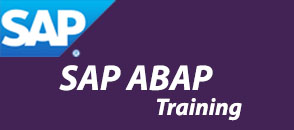


![]() Online Training
Online Training
![]() Corporate Training
Corporate Training
![]() ON Demand
ON Demand
ABAP (Advanced Business Application Programming), is a fourth-generation programming language, used for development and customization purposes in the SAP software. Currently positioned along with Java, as the main language for SAP application server programming, most of the programs are executed under the control of the run-time system.
SAP ABAP is a high level language that is primarily used to develop enterprise application for large business and financial institution on SAP platform. This course is designed for those who want to learn the basics of SAP ABAP and advance in the field of software development.
You need to have a basic understanding of Java programming and Database technologies like PL/SQL to make the most of this course.
Overall introduction to ERP
Introduction SAP R/3 architecture, Introduction to SAP ABAP/4
Expert Instructors
Practical Implementation
Real- time Case Studies
Certification Guidance
Resume Preparation
Placement Assistance
Copyright 2018 © www.unitedglobalsoft.com . All right reserved | Sitemap | Privacy Policy | Terms Of Services